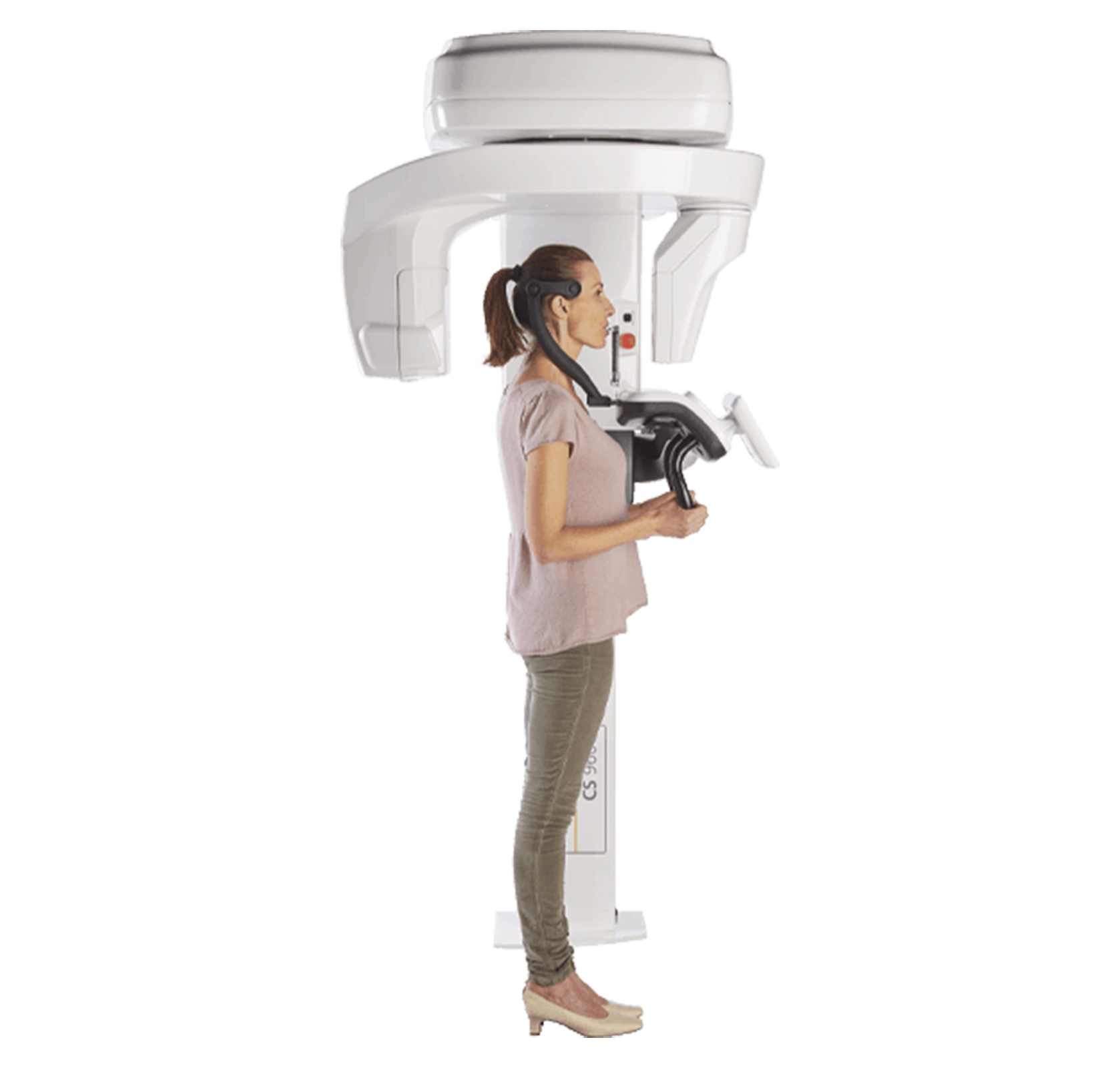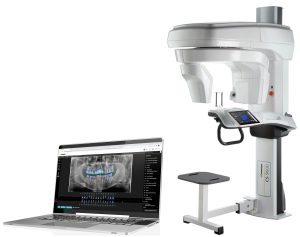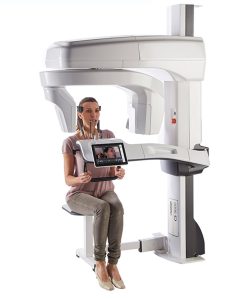An education in technology
Featured Products Promotional FeaturesPosted by: Dental Design 19th April 2024

The digital age of dentistry has introduced a multitude of new workflows into everyday clinical care, each promising to make the performance of a dental professional more efficient and accurate.
For example, the latest cone beam computed tomography (CBCT) systems and intraoral scanners can provide more dynamic insights compared to the 2D radiographs of times gone by, and new online software allows for restoration design with the help of artificial intelligence (AI), and technicians only a click away.
Working with new technology requires an adaption of skills. For those that have primarily worked with analogue workflows for a majority of their career, developing the capability to utilise a new CBCT system in the practice could not only improve patient care, but also offer career advancement.
Back to school
 As well as the additional benefits a new technological investment will provide, and its integration with both the practice’s workflows and physical space, dental professionals in a variety of roles cite complexity as an important factor to consider before investing.[i]
As well as the additional benefits a new technological investment will provide, and its integration with both the practice’s workflows and physical space, dental professionals in a variety of roles cite complexity as an important factor to consider before investing.[i]
The ability to learn how to use new technologies varies between individuals,i but when the advantage presented to a practice is too good to refuse, it is definitely worth the trouble. Luckily, dental professionals can tailor their education to their own preferences, with a variety of options at hand to professionals in the modern age.
For those that prefer to take in new information through auditory means, attending lectures or webinars held around the topic could be key. These talks could focus on new ways to use the technology at hand, in turn detailing fresh workflows for a greater understanding. Webinars are especially useful as they allow for knowledge acquisition from anywhere, be it the practice, at home, or on the move. Watching them live also allows for an interactive learning experience. Any questions that arise could be asked in the moment and directly answered.[ii]
Some of the greatest benefits may come from courses that encourage hands-on education. Modern imaging solutions such as CBCT systems can be complex, and clinicians must have sufficient knowledge and training before they use them in the practice. This is to not only meet the competency required by the General Dental Council,[iii] but ensure patients are safe during CBCT exams. The European Academy of DentoMaxilloFacial Rediology (EADMFR) outlines the need for hands-on education to optimise examinations, and ensure clinicians procure in-depth knowledge to ensure adequate justification for and interpretation of CBCT examinations.[iv]
Training targets
Finding the right level of education for each individual’s aims is essential. The latest edition of the guidance notes on the safe use of X-ray equipment[v] lays out the training targets for general dentists. For practitioners, they must undergo the relevant courses that allow them to justify the need for a CBCT examination. Whilst those registered with the GDC are already able to justify intraoral, panoramic and cephalometric radiographs,vthis is not enough for CBCT level of digital radiography.
Those who want to be classed as operators must undergo local equipment training, as well as further courses if they are clinically evaluating a dental CBCT.v
Investing in new imaging systems therefore presents an opportunity for professional growth for every clinician in the practice. Encouraging those within your practice to take on new courses could help to expand each member’s skill-set across the board, to comprehensively improve healthcare provisions.
An optimal system
After considering the necessary changes to your workflows and practice infrastructure, and especially the methods and levels of training the clinicians in your practice will need to undertake, you must find the right CBCT system for your needs. Choosing a solution that offers similarities to those used in the educational courses may offer the advantage of familiarity. For clinicians who struggle to adapt to vastly different technological systems, it may help to bridge the gap.
the right CBCT system for your needs. Choosing a solution that offers similarities to those used in the educational courses may offer the advantage of familiarity. For clinicians who struggle to adapt to vastly different technological systems, it may help to bridge the gap.
With the time and energy put into adapting to these revolutionary solutions, your practice should choose one that offers exceptional results for the long-term. The CS 9600 CBCT Scanner from Carestream Dental – now a five-time winner of the Cellerant Best of Class Technology Award – may be your ideal solution. This 5-in-1 system offers exceptional results for both 3D and 2D imaging capabilities and pairs immense ease of use for clinicians of all experiences with the next level of precision. Offering dynamic fields of view, with exceptional metal artifact reduction technology, clinicians can attain high image quality with every use. Plus, a brilliant 10-year warranty can protect your investment for the decade to come. Dental professionals receive brilliant training upon installation of the CBCT system. The practice team will obtain comprehensive help from the outstanding Carestream Dental support team, and can delve into the exceptional resource library online to further develop their understanding.
Investing in new technologies doesn’t just require an investment into your practice, but the clinicians around you too. With the time spent learning, you will be prepared for successful treatments informed by newly developed digital imaging systems for many years to come.
For more information on Carestream Dental visit www.carestreamdental.co.uk
For the latest news and updates, follow us on Facebook and Instagram @carestreamdental.uk
Nimisha Nariapara Bio:
Nimisha is the Trade Marketing Manager at Carestream Dental covering the UK, Middle East, Nordics, South Africa, Russia and CIS regions. She has worked at Carestream Dental for the past 7 years, where she has developed her marketing skills and industry knowledge to bring the core values and philosophy of the company to the market.
[i] Matthews, D. C., McNeil, K., Brillant, M., Tax, C., Maillet, P., McCulloch, C. A., & Glogauer, M. (2016). Factors influencing adoption of new technologies into dental practice: a qualitative study. JDR Clinical & Translational Research, 1(1), 77-85.
[ii] Ferro, A. S., Nicholson, K., & Koka, S. (2019). Innovative trends in implant dentistry training and education: a narrative review. Journal of clinical medicine, 8(10), 1618.
[iii] General Dental Council, (N.D.). Principle Seven. Maintain, develop and work within your professional knowledge and skills. (Online) Available at: https://standards.gdc-uk.org/pages/principle7/principle7.aspx [Accessed December 2023]
[iv] Brown, J., Jacobs, R., Levring Jäghagen, E., Lindh, C., Baksi, G., Schulze, D., & Schulze, R. (2014). Basic training requirements for the use of dental CBCT by dentists: a position paper prepared by the European Academy of DentoMaxilloFacial Radiology. Dentomaxillofacial Radiology, 43(1), 20130291.
[v] Public Health England, Faculty of General Dental Practice, (2020). Guidance Notes for Dental Practitioners on the Safe Use of X-ray Equipment, 2nd Edition. (Online) Available at: https://www.rqia.org.uk/RQIA/files/44/449bdd1c-ccb0-4322-b0df-616a0de88fe4.pdf [Accessed December 2023]









